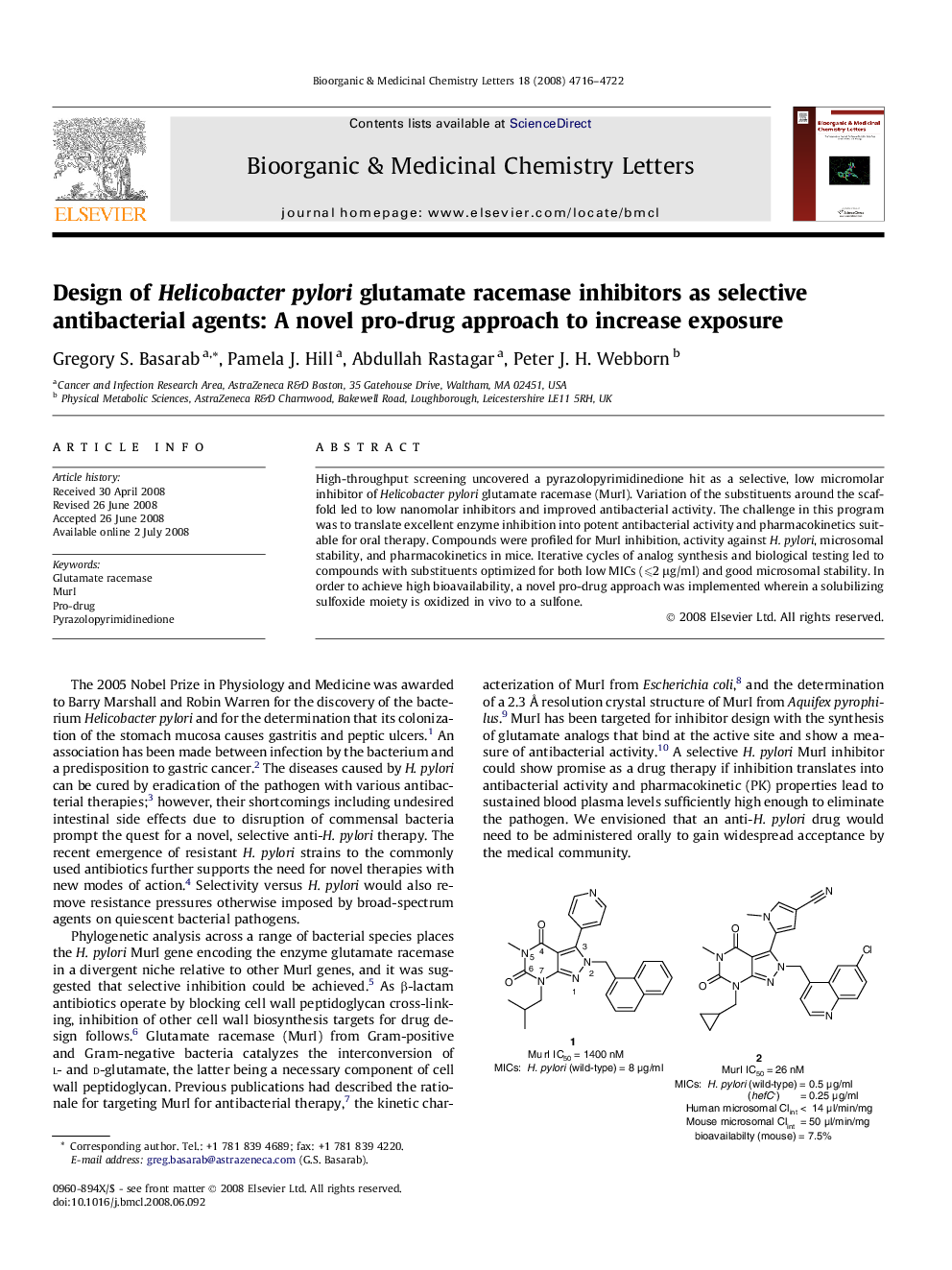| Article ID | Journal | Published Year | Pages | File Type |
|---|---|---|---|---|
| 1376179 | Bioorganic & Medicinal Chemistry Letters | 2008 | 7 Pages |
High-throughput screening uncovered a pyrazolopyrimidinedione hit as a selective, low micromolar inhibitor of Helicobacter pylori glutamate racemase (MurI). Variation of the substituents around the scaffold led to low nanomolar inhibitors and improved antibacterial activity. The challenge in this program was to translate excellent enzyme inhibition into potent antibacterial activity and pharmacokinetics suitable for oral therapy. Compounds were profiled for MurI inhibition, activity against H. pylori, microsomal stability, and pharmacokinetics in mice. Iterative cycles of analog synthesis and biological testing led to compounds with substituents optimized for both low MICs (⩽2 μg/ml) and good microsomal stability. In order to achieve high bioavailability, a novel pro-drug approach was implemented wherein a solubilizing sulfoxide moiety is oxidized in vivo to a sulfone.
Graphical abstractTo achieve high bioavailability towards the design of Helicobacter pylori antibacterial drugs, a pro-drug approach was implemented wherein a sulfoxide moiety is oxidized in vivo to the more potent sulfone.Figure optionsDownload full-size imageDownload as PowerPoint slide
